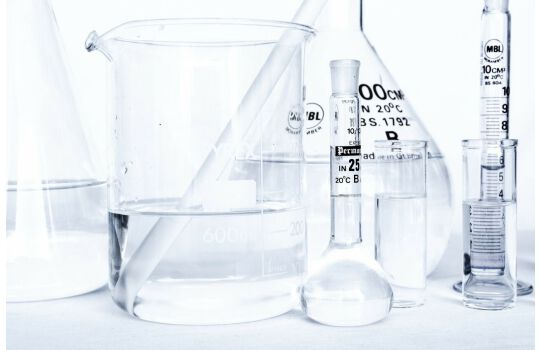Isopropyl alcohol (IUPAC name propan-2-ol; commonly called isopropanol) is a compound with the chemical formula C3H8O. It is a colorless, flammable chemical compound with a strong odor. As an isopropyl group linked to a hydroxyl group, it is the simplest example of a secondary alcohol, where the alcohol carbon atom is attached to two other carbon atoms. It is a structural isomer of 1-propanol and ethyl methyl ether.
It is used in the manufacture of a wide variety of industrial and household chemicals, and is a common ingredient in chemicals such as antiseptics, disinfectants and detergents.
Contents
1 Names
2 Properties
3 Reactions
4 History
5 Production
5.1 Indirect hydration
5.2 Direct hydration
5.3 Hydrogenation of acetone
6 Uses
6.1 Solvent
6.2 Intermediate
6.3 Medical
6.3.1 Early uses as an anesthetic
6.4 Automotive
6.5 Laboratory
7 Safety
8 Toxicology
9 References
10 External links
Names
Isopropyl alcohol is also known as 2-propanol, sec-propyl alcohol, IPA, or isopropanol.
Properties
Isopropyl alcohol is miscible in water, ethanol, ether, and chloroform. It will dissolve ethyl cellulose, polyvinyl butyral, many oils, alkaloids, gums and natural resins.[8] Unlike ethanol or methanol, isopropyl alcohol is not miscible with salt solutions and can be separated from aqueous solutions by adding a salt such as sodium chloride. The process is colloquially called salting out, and causes concentrated isopropyl alcohol to separate into a distinct layer.[9]
Isopropyl alcohol forms an azeotrope with water, which gives a boiling point of 80.37 °C (176.67 °F) and a composition of 87.7 wt% (91 vol%) isopropyl alcohol. Water-isopropyl alcohol mixtures have depressed melting points.[9] It has a slightly bitter taste, and is not safe to drink.[9][10]


